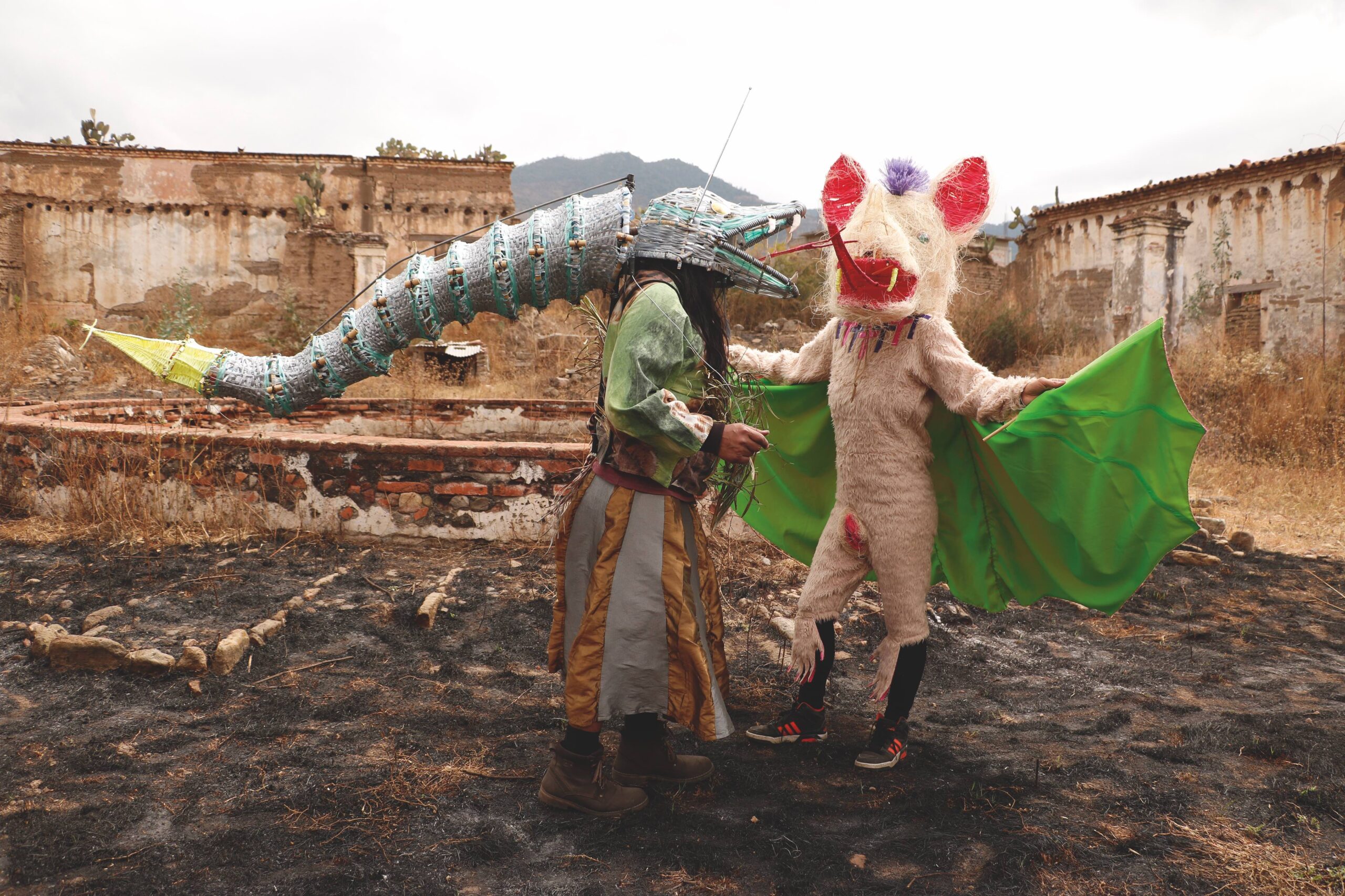Deep Cuts, Chemicals, and Climate: an Interview with Stacy Alaimo on Transcorporeality

Jennifer Teets:
In your book Bodily Natures: Science, Environment, and the Material Self (2010) you position what you call ‘transcorporeality’ from the work of a number of authors, many of them historical feminist authors writing from the legacy of ecopoetics, such as Meridel Le Sueur, Muriel Rukeyser, and Audre Lorde. The meshing of fleshes and more-than-human worlds is a defining line in your book, next to material interactions of things and bodies. Seeing that it was written over ten years ago, how do you see the concept of transcorporeality today in a world of pestilence, famine, and war, largely fueled by an ongoing climate crisis?
Stacy Alaimo:
Bodily Natures analysed environmental justice and environmental health movements, developing an ecomaterialist theory from the way that invisible toxins materially interconnect people with places, substances, and consumer products. Climate change, with its dramatic catastrophes, has eclipsed toxic chemicals, which is disturbing, but climate change has brought a wider consciousness of how humans – to different degrees – are immersed within and not protected from the wider material world. I like the concept of ‘weathering’ that Astrida Neimanis and Rachel Loewen Walker have created, which builds on my concept of transcorporeality, adding a temporal dimension. They seek to ‘cultivate a sensibility that attunes us not only to the “now” of the weather, but toward ourselves and the world as weather bodies, mutually caught up in the whirlwind of a weather-world, in the thickness of climate-time.’ For both climate change and toxins, a transcorporeal consciousness dissolves the delusional sense that we can somehow separate ourselves from the processes, substances, xenobiotic chemicals, and weather systems of the more-than-human world.

JT:
Many of the writers and subjects you address are sourced from the second half of the twentieth century. They point to the need for social and emotional repair. You comparatively analyse their texts and signal environmental harm related to extractivism and chemical exposure (xenobiotics, radiation, uranium poisoning) related to late capitalism. Your research exposes the deep cuts of structural racism within the literary works and poems of these writers. I found it refreshing how you position these historic works within the canon of the late sociologist Ulrich Beck and his development of ‘risk’ as ‘a systematic way of dealing with hazards and insecurities induced and introduced by modernization itself.’
SA:
Thank you. I appreciate your phrasing here, ‘the deep cuts of structural racism,’ which suggests that while structures seem abstract, the bodily harm they cause is palpable. When I wrote Bodily Natures, literary studies and theory were dominated by social constructionist and linguistic paradigms that did not allow for the significance or agency of environmental forces and embodiment. The new materialist model I developed insists that social forces such as racism are not merely discourses or ideologies operating in a social and political sphere but directly affect bodies. Whether those bodily effects are captured, rendered visible, and attended to is a matter of technologies, funding, politics, and activist driven knowledge making practices. Since I published Bodily Natures, some scholars have developed parallels between the concept of transcorporeality and epigenetics, which makes sense, as epigenetics can be understood as a mode of transcorporeality that is passed down through generations. Epigenetics underscores the enduring traumas of racism, however, it could also be taken up in racist or even eugenicist movements – this is volatile territory! The key question is how to understand the intersections between social, economic, and political forces and their material effects on people as well as peoples, and then what to do about it. The nature/culture dualism continues to segregate academic fields and to structure our basic assumptions and mappings. Transcorporeality challenges us to think across the mind/ body, culture/nature, subject/object dualisms, and, with Ulrich Beck and Robert Proctor (author of Cancer Wars: How Politics Shapes What we Know and Don’t Know About Cancer), to question whether we have the scientific data and frameworks we need to make risk assessments in our daily life, and, importantly, to what extent economic, corporate, and political forces have produced ignorance to serve their own agendas.

JT:
While focusing on enlisting human related environmental events that entail social indebtedness with techniques such as human biomonitoring, vulnerable bodies are centrefold here. Seeing that we are still entrenched within an epidemiological crisis, how do you see the evolution of transcorporeality strengthening the field of medical posthumanities?
SA:
I’m thrilled by the development of the medical posthumanities and look forward to the scholarship in this area, especially that of Lucinda Cole. To consider the medical posthumanities in terms of transcorporeality means insisting that human health be understood as profoundly interconnected with the health of other species and the environment. From diagnosis to treatment, medicine needs to conceptually dissolve the boundaries around individual bodies and operate within a much larger framework – since we humans are, literally, the food, water, air, and toxins that become us. Conventional medicine’s emphasis on genetic reductivism and its lack of attention to the effect of toxins on human health, both which I critique in Bodily Natures, has not changed. Chemical production continues to accelerate, with many chemicals in circulation that have never been tested for safety or for their interactions with other chemicals. While the Environmental Working Group still battles the proliferation of toxic chemicals, I think many people who have the privilege of ignoring the effects of toxins, do so, thus normalising modern life within a toxic stew. Transcorporeality, since it grew from environmental health and environmental justice movements, does begin with the human, and is somewhat anthropocentric, but we can imagine a medical posthumanities as a multispecies transcorporeality, where every species dwells at the risky crossroads between body, substance, and place. Indeed, plastic pollution dramatically demonstrates that nonhuman species must also navigate risk culture, as many animals mistakenly eat plastics, as they lack the means to assess their danger. As an animal person I also hope that the medical posthumanities will emphasise animal welfare, specifically more restrictions on animal experimentation and factory farming.
JT:
Another writer you cite is philosopher Nancy Tuana and her definition of ‘viscous porosity.’ In her writing, Tuana evokes the problematic nature/culture schism in light of climate change and natural weather events. One that does not do justice to the complexity of interactions of phenomena. She calls this interactionism. In a similar fashion, theorist Karen Barad has persuasively argued, ‘The point is not merely that there are important material factors in addition to discursive ones; rather, the issue is the conjoined material-discursive nature of constraints, conditions, and practices.’ Perhaps we could attribute both concepts to the modes of new materialist posthumanism that your concept of transcorporeality fits within. Could you talk a little more about this?
SA:
Early on, before new materialisms hit the academic stage, Nancy Tuana rejected the sex/gender distinction that had been so crucial but also limiting for feminist theory. It is telling that Tuana and Karen Barad write from feminist science studies perspectives, taking up feminism’s long commitment to thinking through embodiment as an ethical and political project while engaging with science and theories of science that seek to understand everything that used to be called ‘nature.’ Tuana, Barad, and Donna Haraway, have been foundational thinkers for feminist new materialism and posthumanisms. My conception of transcorporeality is aligned with and indebted to their work.

JT:
How does your concept of transcorporeality extend to your recent work exploring oceanic ecologies and deep sea creatures?
SA:
One of the most difficult problems for ocean conservation, especially in the open seas and the deep seas, is that terrestrial humans are disconnected from these habitats and the species that dwell there. In Exposed: Environmental Politics and Pleasures in Posthuman Times, the chapter, ‘Oceanic Origins, Plastic Activism, and New Materialism at Sea,’ extends transcorporeality to the ocean, submerging the human within global systems of consumption, carbon production, and pollution, dramatising the strange agencies of the ordinary stuff of our lives. Narratives about life beginning in the sea, meant to evoke a scale shifting evolutionary kinship and intimacy with marine species, can ripple through how we imagine our embodied being. But such narratives can also evoke ‘spiritualised origin stories that mystify the past and ignore contemporary interrelations. It is vitally important for financially privileged people to trace the devastating effects that capitalism and consumerism are having on marine ecologies, whether that be through large scale industrial fishing and mining, climate change and acidification, or through plastic, chemical and radioactive pollution. The fact that the ocean is being destroyed by global capitalism, climate change, and acidification is not an abstract idea, but instead, a transcorporeal tracing that places each of us directly within these damaging networks, economies, processes, and practices. Dwelling with an understanding of the immense entanglement of our everyday lives with the extinction of marine species can be painful, maddening, and overwhelming, but it can also reveal myriad opportunities to minimise harm.
On the other hand, when I began my book on deep sea creatures, science, and aesthetics, I intentionally chose a topic distant from the embodied site of transcorporeality and the ecomaterialist theories I had developed in Bodily Natures and Exposed. I embrace the bafflement of ‘beginner’s mind’ when starting a new project. I was initially struck by how strange it was to have astonishing images of newly discovered deep sea life flow across my computer screen. As they hovered digitally, they sparked an impossible, ethereal relation between us. I couldn’t resist their aesthetic enticements, despite the academic training that would have me dismiss them as yet another commodification of nonhuman life for human pleasure. So, I’m investigating how the aesthetic flows through stylized portrayals of deep sea life in science, art, science fiction, and popular culture, analysing the sense of immediacy in highly mediated depictions of deep sea life, and the way the aesthetic animates and vivifies deep sea species as beings with their own perspectives and their own nearly unimaginable worlds.
JT:
I write this emerging from two long weeks of heat waves in Europe, from Paris, where I live. Europe is warming three to four times faster than the rest of the midlatitudes. Scientists have attributed the changes to fluctuations of the jet stream leading to double jets, dry soils and sluggish ocean circulation. We too have had our share of forest fires. I couldn’t help but reflect on your call for the need of performing insurgent exposure as a means to create affirmative, collective, multispecies modes of transcorporeality. Could you say a little on this?
SA:
Sure. I wrote about insurgent exposure as a feminist and environmental mode of protest that dramatises vulnerability to the rapidly changing world. As a mode of activism, the politics of exposure (which sometimes entails literally exposing oneself), strips off the conventional armour of impermeability that capitalist consumerism requires and declares that humans are not impervious to toxic flows nor floating above the phenomenon of climate change but instead, are inextricably part of these substances and planetary processes. While exposures, like everything else, are unjustly distributed within and between regions, and in terms of class and race, activists can occupy the sense of exposure to combat the delusional retreat into a domestic cocoon or a masculinist sense of the hard body as impenetrable. Audre Lord, in The Cancer Journals, boldly declared cancer to be not merely a personal matter but a political one, transforming her own vulnerability into revolt. By contrast, and rather predictably, contemporary white nationalists in the US, who are also absurdly masculinist – with their guns, aggressively huge trucks, and refusal to mask – deny their vulnerability and their enmeshment with the environment.
The heat waves and fires in Europe look horrific, as did the much earlier fires in Australia. At what point, with rising temperatures, floods, famine, hurricanes, and more, will climate change be taken seriously? One of the things that most concerns me is that the predominant environmental concern right now – climate change – is cast as almost entirely an anthropocentric issue. There is something deeply wrong when environmentalism becomes solely about humans, especially in the midst of the Sixth Great Extinction. When the 2020 wildfires in Oregon surrounded my home with smoke and dark skies and ashes raining down for a week, I worried about the toxins in the ashes, the air that my dogs were breathing, and the fact that so many wild animals were running or flying for their lives while breathing hazardous air and maybe being affected by the chemicals in the aerial fire retardant being dropped. Many wild animals were burned in these terribly hot, rapidly spreading fires. Wild animals are increasingly vulnerable because of the interacting effects of habitat loss, chemicals, and climate change. I hope we can occupy an insurgent vulnerability as a deeply personal and simultaneously political position that recognises disparities and injustices among different groups of people but also includes wildlife and other nonhuman animals within our scope of concern.
It is an enraging, heartbreaking time. But as I write I watch the hummingbirds enjoy the native flowers I have planted for them. I am happy the hummingbirds still exist, but their existence does not inspire hope, a wispy fairy-land feeling, but instead, drives me to keep doing whatever I can.

Jennifer Teets is a Texas-born curator and writer based in Paris working at the intersection of science studies, literature, and performance. She is a graduate of SPEAP (Sciences Po Experimentation in Arts and Politics, directed by Bruno Latour), SciencesPo, Paris 2014. Within her work she addresses the roles of consumption and contamination as an embodiment of thought which then performs, spores, proliferates. She is interested in the ‘backstory’ of matter, its conditioning as both ‘natural’ and ‘cultural’ vis-á-vis materials such as milk and cheese (post trauma goat milk production), terra sigillata (sealed medicinal earth), and mud. She has curated numerous exhibitions and talks since the early 2000s with artists and thinkers worldwide and is the director/convener of The World in Which We Occur, a research-based entity that explores themes concerned with artistic inquiry, philosophy of science, and ecology and its associated study group Matter in Flux. She recently curated ‘Carbonate of Copper’, at Artpace, San Antonio and is currently at work on an expanded version for the Blaffer Art Museum in Houston in 2023. The exhibition is a critical examination of the intersection of cultural inheritance and historic infrastructure from the domain of the visual arts and the humanities. She has written extensively for art-agenda, Art + Education, Art Papers, Frieze, Metropolis M, Mousse, SPIKE, and Terremoto amongst others. She is editor of Electric Brine, published by Archive Books in 2021.




